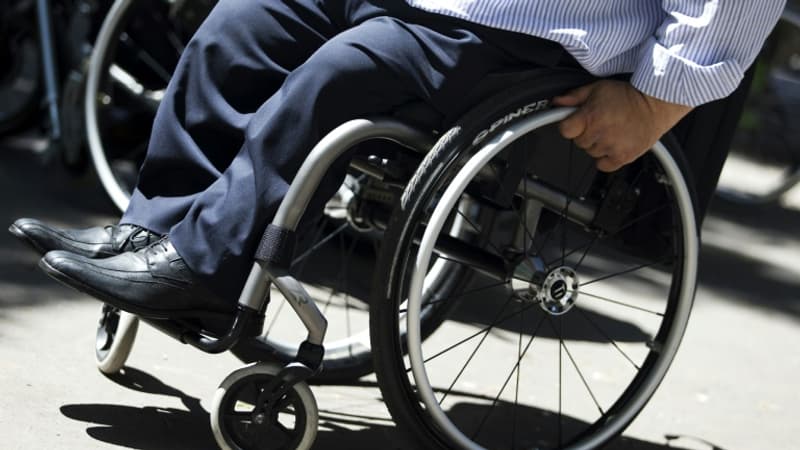In the labor market, people with disabilities are also benefiting from a rebound, with the unemployment rate at its lowest point. But the most fragile remain on the sidelines, at the risk of “getting discouraged”, the associations warn. In three years, the unemployment rate for people with disabilities has dropped from 19% to 14%. This trend “opens up enormous prospects for reaching the goal of full employment,” say the organizers of the European Week for the Employment of People with Disabilities (SEEPH), organized starting this Monday.
The current tensions in the labor market “are very likely to encourage companies to hire” unemployed people with disabilities, Christophe Roth, president of Agefiph, the organization that works for the professional integration of affected people, wants to believe.
As an example of this virtuous trend, more and more companies -such as the Burger King restaurant chain or the E.Leclerc supermarkets- are betting, through an agreement with Agefiph, to give more room to the disabled. And some 10,000 employers will participate in “DuoDay” this year, welcoming a disabled job seeker for a day on November 17. Last year, 20% of these meetings resulted in concrete proposals for the participants (internships, apprenticeships or employment).
Rachida Bendehane, 52, has just found a job after many years of inactivity.
Doubling the unemployment rate
“Finding a job is possible! With support, motivation and self-confidence that allows you to make your disability a strength”, analyzes the fifty-year-old.
Success also presupposes “the open-mindedness of the company you’re applying to,” but if many employers say they’re open to this question, “sometimes it’s actually different,” laments Ms. Bendehane.
Because the difficulties remain. The unemployment rate for people with disabilities has certainly decreased, but it is still almost double that of the general population. Major stakeholders are not necessarily optimistic: only 24% of people with disabilities believe in the possibility of full employment (versus 35% of the general public), according to a recent Ifop survey for Agefiph. And 64% of those who have a job are afraid of losing it.
The objective of full employment is a “very nice slogan”, but “due to the seriousness of certain disabilities, all people with disabilities cannot exercise their social participation through a professional activity”, says Bruno Pollez, president of the association Laadapt. , which is co-organized by SEEPH.
Efforts Targeting the Discouraged Unemployed
For the association APF France Handicap, the efforts of the public authorities must be directed at the “discouraged unemployed” who believe they have “almost no chance” of getting a job. To help them, “the paths continue to be too compartmentalized between the actors in the fight against exclusion and those in the field of disability”, laments the APF, which notes that 59% of people with disabilities have been unemployed for more than a year in a situation of disability, compared to 48% in the general population.
For Labor Minister Olivier Dussopt, “the more full employment is within reach, the more we will have to support men and women battered by life.”
Meanwhile, discouragement can also conquer people who work, but have accepted a job that is not related to their level of training. Like Guillaume Alemany, 36, with Asperger’s autism, who works on the assembly line of a food factory in Saint-Malo, while graduating in history.
“I am getting old, I am taking many steps, but I have had many failures. I persevere, but I get tired.”
Source: BFM TV


